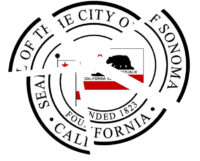The results are in and the word is out to the Obama-Biden transition team: Sonoma wants sweeping health care reform.
At a Sonoma Valley community discussion last week, part of a nationwide response to invitations from the Obama-Biden transition team to communities throughout the country to speak up on health care, nearly 70 people spoke out individually and worked together in groups to express the problem and recommend solutions to what many described as a broken system.
The conclusion reached by the meeting’s host Bill Boerum, Chair of the Sonoma Valley Health Care District, after listening to all spoken comments and reviewing the submissions by five work groups, is that, “The temper of the participants was emphatically for sweeping and comprehensive change,” he said, “not an incremental approach. Half measures or hybrid approaches were not favored by this assembly.” Group leader Celina Briggs agreed, “We weren’t comfortable with piecemeal work.”
One of five small group leaders, health care district board member Dr. Dick Kirk praised the overall effort. “It was heartwarming on a number of accounts,” he said. “First, the Obama people listened and wanted to listen, and put out a call for voices, and people all over the country got together and did what we did, and second, there was no bitching and moaning, no posturing, no belittling of someone else’s idea, just ‘Hey, what do you want to do!’”
Boerum listed the conclusions of the five working groups as follows:
• Sweeping dramatic changes are needed – not incremental;
• Health care should be regarded as an individual right and a social responsibility akin to government providing education, fire and police protection and highways.
• There should be a single payer / one pool of insurance providing universal coverage, removing the profit motive.
• Providers should be paid to keep people well.
• There needs to be recognition of the different resources needed for health and medical services, including therapy and drugs, directed at wellness, preventative care, acute care and chronic care.
• There should be one card for universal access, an electronic health card.
• Characteristics of a national program should include portability and should eliminate pre-existing condition restrictions.
• The new system should eliminate workmen’s compensation; make business more competitive; reduce malpractice and malpractice insurance.
• Local and regional accountability with national performance standards with observable and measurable key performance indicators.
• Look at countries that do health care well, including preventative education and wellness.
• Break the link between employment and insurance.
Participants learned as well as recommended. Lauren Ayers, notetaker for one of the groups, said that as result of their discussion, the idea that a single payer system would actually benefit employers became clear for one participant who had previously seen it as a “kind of socialist scheme.” For her own part, Ayers, an outspoken advocate of Vitamin D, said, “I’m all for an ER but when I’m paying for my health insurance I don’t want to be paying for people who were still smoking, and eating trans fats.”
“Universal health care and a single payer system were overwhelmingly seen as the needed solutions,” Boerum said. “There was consensus to take health care out of the hands of insurance and drug companies and give it back to those actively engaged in actual patient care, those who will make rational medical decisions solely for the health and well being of patients.” He said concern was also voiced about the influence of “special interest groups” to preserve the status quo.
Phyllis Kirk summed up the result of the meeting in psychological terms. “Bad as things have been, right up to today, people are feeling hopeful. We all know it’s going to be a tough year, but we all feel it’s not going to be as bad as it has been. When you turn things around psychologically, the rest will follow.”
Boerum said he said would be sending the results off Monday to all the appropriate state and federal officials.
The Participant Survey
Below are the responses to the Participant Survey, which accompanied the Guide and were compiled by Bill Boerum, who noted that many participants felt the questions too few and too general to be useful. As evidence, only half of the participants answered the survey. The results of those who did are below:
What do you perceive is the biggest problem in the health care system?
a. Cost of health insurance – 26
b. Cost of health care services – 10
c. Difficulty getting insurance because of a pre-existing condition – 11
d. Lack of emphasis on prevention – 8
e. Quality of health care – 7
What is the best way of policy makers to develop a plan to address the health system problems?
a. Community meetings like these – 22
b. Traditional town hall meetings – 13
c. Surveys soliciting ideas on reform – 15
d. White House Health Care Summit – 17
e. Congressional hearings on C-Span – 8
Following this discussion, what additional information would help you participate in this great debate?
a. More background information on problems in the health care system – 10
b. More information on solutions for health reform – 26
c. More stories on the how the system affects real people – 5
d. More opportunities to discuss the issues – 14




